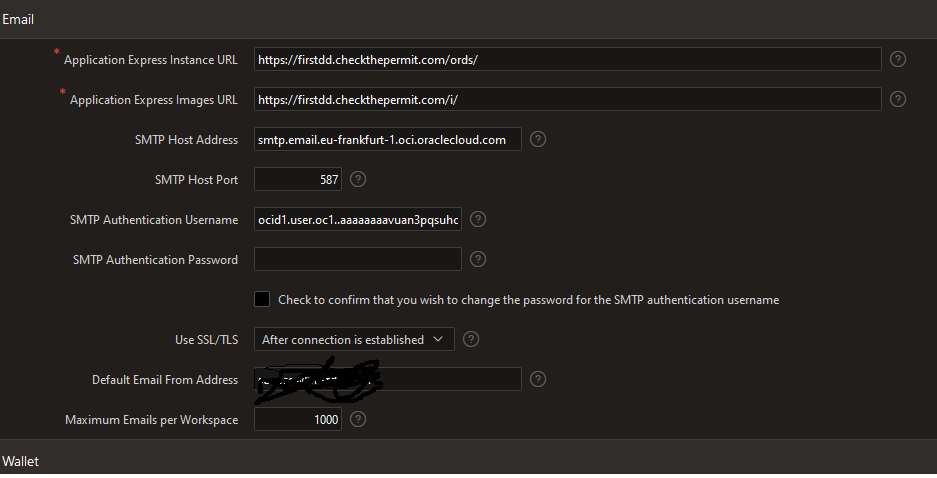Hi There
I have set up a database on OCI (NOT Autoomous) and configured the SMTP credentials for a user. I have then set the instance email settings in APEX. I note that an ACL has been created.
However when I try to test it there are no errors - but the mails sit in the APEX mail queue.
Are there any detailed logs that I can look at to figure what the H_**l is going on?_
It is immensly frustrating trying to do what should be straight forward - when under severe pressure as I am sure most of you know already ...
smtp.email.eu-frankf 587 587 NETWORK_ACL_CB64B6B1AEEF78B0E0530B6E130A2519 0000000080002779 SYS
urt-1.oci.oracleclou
d.com
 Thx
Thx
Paul